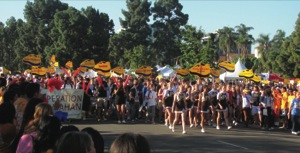
BY CORRI PLANCK
The preparations for AIDS Walk San Diego have never been surrounded by so much optimism for an end to the epidemic levels of HIV infection.
While teams are forming and fundraising and volunteers and staffers are busily organizing event logistics, an important community conversation is taking place. In the midst of this flurry of activity, the role of PrEP and PEP (pre-exposure and post-exposure prophylaxis) in the treatment and prevention of HIV is being discussed in public forums, via social media and privately among gay men.
This treatment, primarily in the form of the drug Truvada, has been regarded as controversial due to fear that its use would result in the increase of condomless sex among gay men, and possibly cause an increase in other sexually transmitted diseases. However, in the last year, PrEP has been recommended by both the Centers for Disease Control (CDC) and the World Health Organization (WHO) for sexually active gay men.
The San Diego LGBT Community Center and AIDS Walk (The Center produces AIDS Walk & Run San Diego) issued the #BeTheGeneration call to end new infections. #BeTheGeneration is designed to strengthen prevention and education efforts, and increase access and utilization of HIV testing and treatment options. It also aims to help lessen the stigma still too often associated with being HIV positive.
“We can be the generation that ends HIV/AIDS as an epidemic-level illness in San Diego,” said Dr. Delores A. Jacobs, chief executive officer of The Center. “Together, we can commit to innovative strategies that will reduce new cases in San Diego.”
Jacobs was specific in her call to end new infections, outlining a program of education, prevention, regular testing, pre- and post-exposure treatments.
“To reduce new infections, we must provide HIV/AIDS education without shame or fear, as well as access to condoms and medications for all who choose them,” Jacobs said. “PrEP (pre-exposure prophylaxis) and PEP (post-exposure prophylaxis) are revolutionary tools in this fight, and offer the most promising hope we have seen in prevention.
“We must ensure those who have the virus can access the medical care and medications that will keep their viral loads undetectable so they will stay healthier and become much less likely to transmit the virus. We need everyone to get tested frequently, and to encourage others to do the same,” she continued. “With an intensified focus on prevention, testing and treatment, new infections can and will decrease. By decreasing the number of new infections, we will, in turn, decrease the transmission rate, and help bring about an end to this epidemic.”
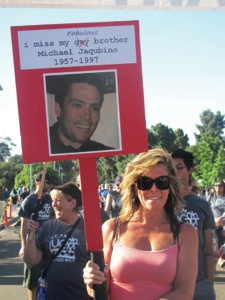
Patrick Loose, chief of San Diego County’s HIV, STD & Hepatitis Branch of Public Health Services, echoed Jacobs call for a multi-faceted approach to ending the epidemic levels of HIV/AIDS.
“The CDC, after review of research studies, has recommended PrEP for all individuals who are at high-risk for HIV infection. It represents a significant advance in HIV prevention efforts, in that it is the first biomedical intervention that has been shown to be effective in preventing HIV,” Loose said. “In order for it to be maximally effective, however, it must be taken as prescribed and in combination with other HIV prevention tools, such as condom use, reducing the number of partners and safer sex practices.
“HIV is a complex disease, and there is no single key to preventing new infections,” Loose continued. “Effectively addressing HIV will continue to require multiple approaches, including identifying people who are unaware, connecting people to care and ensuring they remain in care over time, and providing targeted education and prevention activities to individuals at risk.”
In San Diego, the gay male community still represents the greatest number of new infections. According to Loose, HIV/AIDS in San Diego mirrors the national epidemic in some ways, but with some significant differences.
“First, much like the rest of the nation, HIV disproportionately impacts gay and bisexual men and communities of color,” Loose said. “However, unlike the rest of the nation, here in San Diego the past decade has seen an increase in the proportion of cases among gay, bisexual and other men who have sex with men. In the past year, new infections among men who have sex with men represented over 75 percent of all new cases. Compared with the rest of the nation, we have fewer cases among women, heterosexuals and injection drug users.
“We have seen an increase in the proportion of cases among those 24 and under, but not nearly the increase that we are seeing nationally. Last year, about 17 percent of our new cases were among those 24 and under,” he said. “We are also seeing increases in the proportion of new diagnoses among those who are 45 and older. We have seen a large decrease in the proportion of new diagnoses among those aged 35 to 44.”
Both Jacobs and Loose acknowledge some real challenges in trying to curb new infections. One of the greatest is to identify those who are infected with HIV, but are not aware of their status.
“The CDC continues to revise estimates of persons living with HIV who are unaware of their status,” Loose said. “The most recent estimate is that approximately 15.8 percent of individuals who are infected are unaware. If we apply that estimate to our local epidemic that would mean that over 2,300 persons in San Diego County are infected and unaware. The CDC also estimates that approximately 50 percent of new HIV infections come from someone who was unaware of their status.
“Identifying the unaware is challenging for a number of reasons. Many people who are at risk do not get tested, often because they are afraid of the results and the stigma associated with HIV; there are other issues in their lives such as mental illness, substance abuse or homelessness, that take priority; or they are not aware they are at risk.”
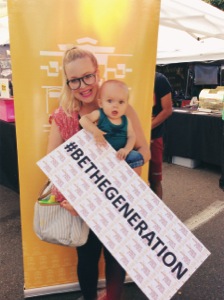
Loose noted that the County of San Diego, “… works closely with the medical provider community, several community health centers, and community-based organizations to help identify individuals who are at-risk and to provide them with HIV counseling and testing.” In addition, the County funds many HIV counseling and testing programs.
Jacobs reiterated that the stigma associated with being HIV positive causes real and serious personal and public health problems, even 30 years into the epidemic. She hopes that events like AIDS Walk and campaigns like #BeTheGeneration will send a message of compassion and support for those impacted by HIV/AIDS, and encourage more open dialogue to help lessen the stigma.
“When AIDS first hit us, it was like a bomb went off in our community, leaving too few survivors. A generation of gay men suffered and died. In spite of our grief and fear, we fought for compassionate care and medical interventions. We fought for funding and against government silence. We fought to end a plague that decimated our community, and to make the dying stop,” Jacobs said.
“That fight was bold and courageous. More than three decades later, our efforts to end this epidemic must be equally bold,” she said. “We still mourn our profound losses, but today we have increased knowledge and better tools to fight with. Unfortunately, the stigma and shame remain. But we are dealing with a virus, not a moral condition. We have to fight through that stigma and shame, and talk openly to get to no new cases – through testing, treatment and new prevention tools.”
How You Can Participate in the 25th Annual AIDS Walk & Run San Diego
In recognition of this important milestone anniversary, there are multiple options to participate in the 25th annual AIDS Walk & Run San Diego.
“Reasons We Remember” – Friday, Sept. 26 at 7 p.m. – Normal and University
On the eve of the Walk, the community is invited for a quieter moment to reflect and remember those we’ve lost to AIDS.
Community speakers will share their stories, and a candlelight walk will begin at Normal Street and University Avenue down to Tenth Avenue and back. The event will start at 7 p.m. at Normal and University.
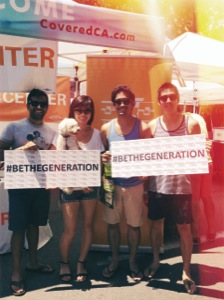
25th Annual AIDS Walk & Run San Diego – Saturday, Sept. 27 – Normal and Harvey Milk Streets
This year’s AIDS Walk & Run will take place on a new day – Saturday, Sept. 27 – and will start and finish in a new location – Normal and Harvey Milk Streets in Hillcrest. The route will still proceed through Balboa Park. This year’s event will feature the AIDS Walk (steps off at 8:15 a.m.), a new 5K fun run (begins at 8:10 a.m.) and a 10K run (begins at 7:45 a.m.).
To register, or for more information, visit www.AIDSWalkSD.org or call 619-692-2077.
Post-Walk Brunch Celebrations – Saturday, Sept. 27
Whether you walk, run or just want another way to support the cause, dine out at one of these incredible Hillcrest eateries and you’ll be contributing to AIDS Walk, as each of the following restaurants is donating a portion of their sales Sat., Sept. 27 to AIDS Walk & Run San Diego.
Martinis Above Fourth, 3940 Fourth Ave. – 50 percent
Harvey Milk’s American Diner, 535 University Ave. – 25 percent
Uptown Tavern, 1235 University Ave. – 25 percent
East Coast Pizza/Hillcrest, 435 University Ave. – 25 percent
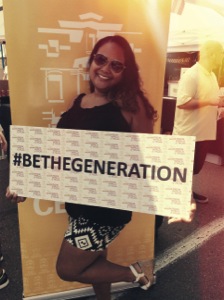
Why Your Efforts Matter
AIDS Walk is the largest one-day HIV/AIDS fundraiser in San Diego County, and last year helped deliver nearly $400,000 in grants to 19 local HIV/AIDS service organizations. In addition to providing much-needed funding to help serve the more than 20,000 people living with HIV in San Diego County, AIDS Walk helps raise awareness about the impact of HIV and AIDS.
“HIV continues to be a major public health challenge in San Diego County, and effectively addressing it requires funding for medical care as well as support services,” said Patrick Loose, chief of the HIV, STD & Hepatitis Branch of Public Health Services for the County of San Diego. “AIDS Walk continues to fill a vital gap in the funding for HIV efforts by raising funds that would otherwise not be available to address this epidemic.”











